If you don’t understand introversion, watch this. That’s what it’s like. Almost exactly.
An interesting copy of The Guardian from 100 years ago today, with significant bleed-through of page two’s contents onto the front page. This continues throughout the issue. I wonder if it was thin newsprint or over-inking.
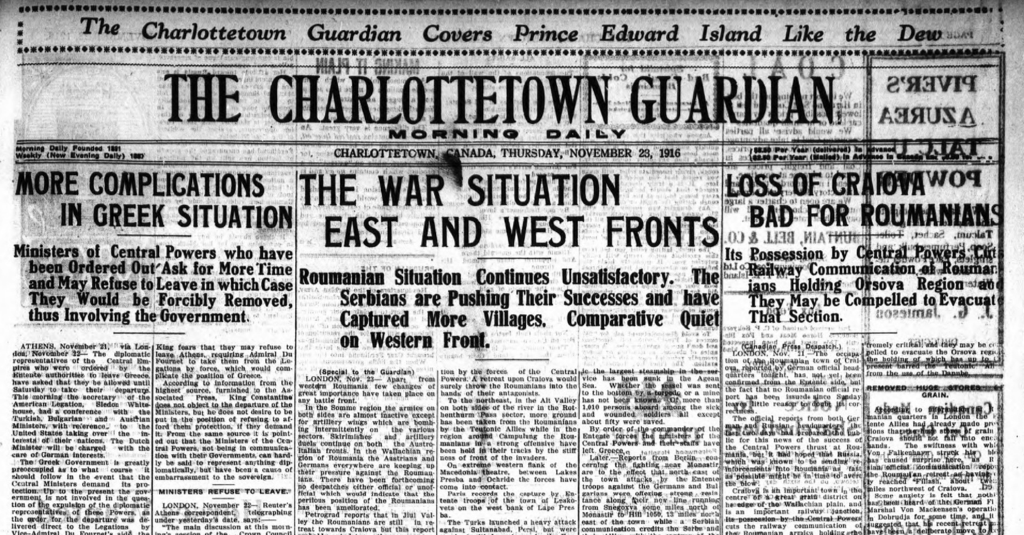
It turns out to be remarkable simply to set up the live video from the PEI Legislative Assembly to stream to a television with an inexpensive Raspberry Pi running the open source Kodi media centre.
Here’s how I did it.
First, I bought a Raspberry Pi 3 and an SD card from ModMyPi in the U.K. They have good prices, and inexpensive and quick shipping (6 days from order to receipt).
Next, I installed OSMC, a Raspberry Pi-focused version of Kodi, on the SD card. OSMC is very, very easy to install: just download an installer to your desktop or laptop computer, burn the image onto the SD card, and insert the SD card into the Raspberry Pi.
Powering on the Raspberry Pi with the OSMC SD card inserted leads through a simply configuration process — enter wifi credentials, set time zone, etc. The most important option to be sure to check is the one to enable SSH access to the device, which will allow a file to be transferred to it later.
Now is the somewhat tricky part.
On another computer, create a file called peileg.strm with the following contents:
#EXTM3U
#EXTINF:-1,PEI Legislative Assembly+
http://http-delivery.isilive.ca/live/_definst_/pei/live/chunklist.m3u8
Now you need to get that file onto the Raspberry Pi.
First, you need to find the IP address of your Pi; navigate to System > System info and note the value beside IP address. In this example, it’s 192.168.2.18:

Next, from the command line of the computer where you created the peileg.strm file, transfer the file to the Pi:
scp ./peileg.strm osmc@192.168.2.18:/home/osmc/Movies
The 192.168.2.18 is the IP address you noted earlier.
You’ll be prompted to enter the password for the username osmc on your Pi (default is osmc; you should change it!).
Now that the file is on your Pi, you simply need to play it.
Navigate to Videos > Files > Add videos. In the Add video source dialog, click Browse, then select Home folder and click OK. If a Set Content dialog pops up you can ignore it and click OK.
At this point you should have video source called osmc, and inside it, under Movies, you’ll see the peileg.strm:
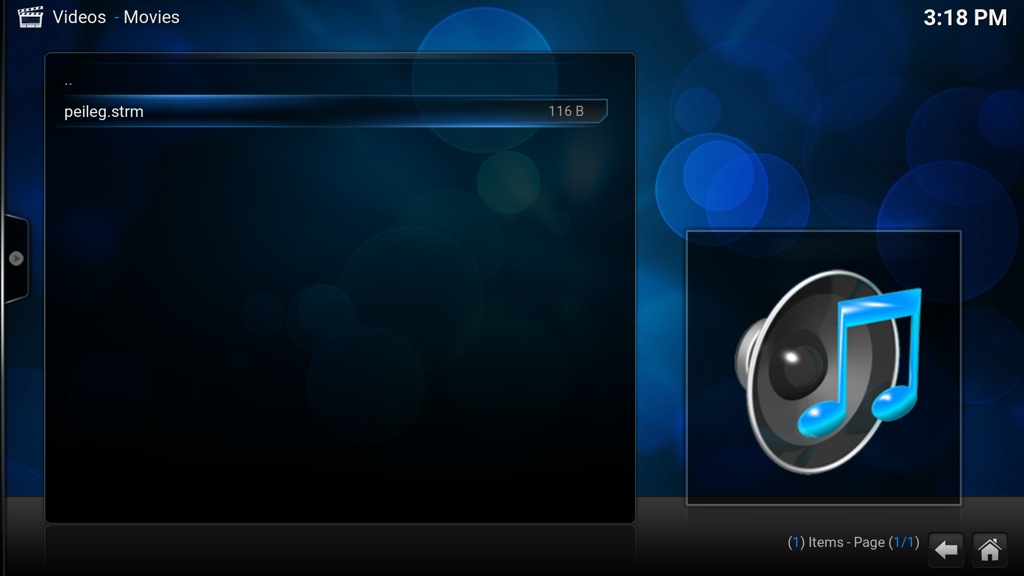
To play the Legislative Assembly livestream, simply click on that file and, presto:
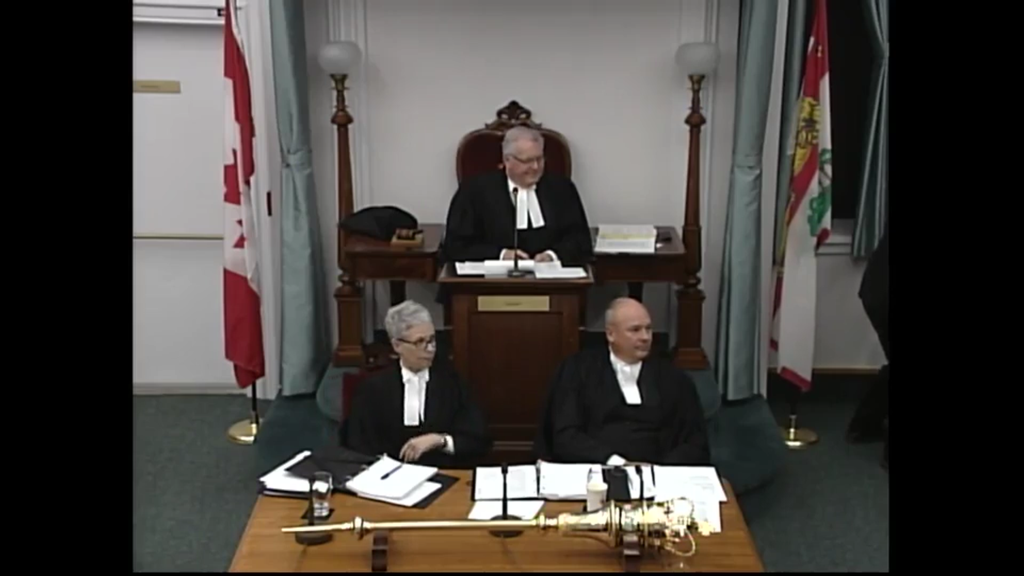
Sixty-five years ago this month Prince Edward Island played host to Princess Elizabeth and the Duke of Edinburgh, a visit celebrated on the front page of The Guardian:
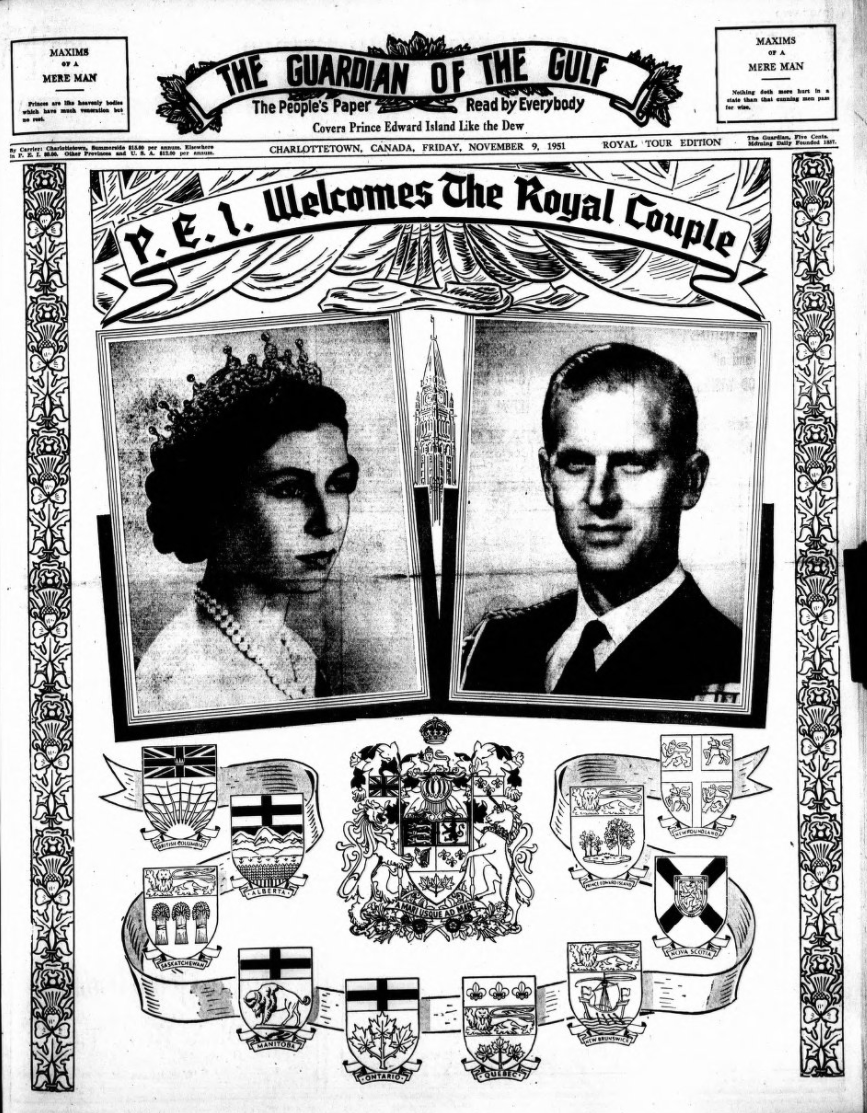
The route they followed in Charlottetown was described by this map in the paper:
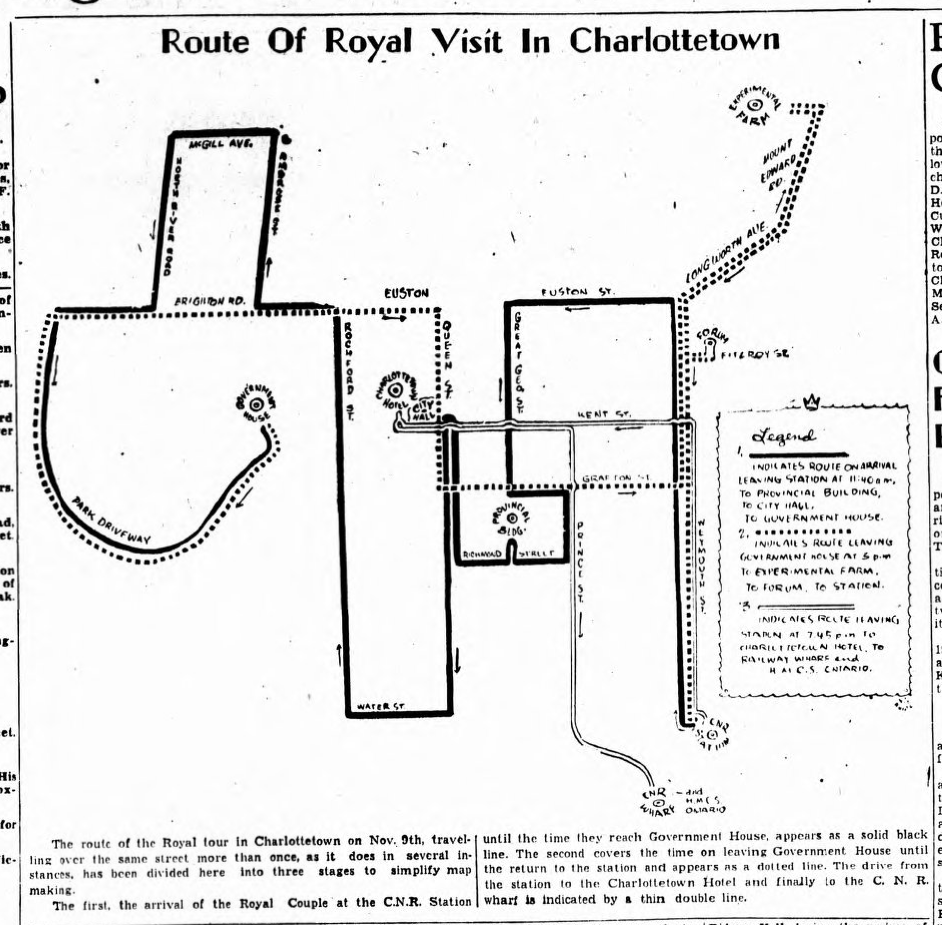
Their program of activities was reported as follows:
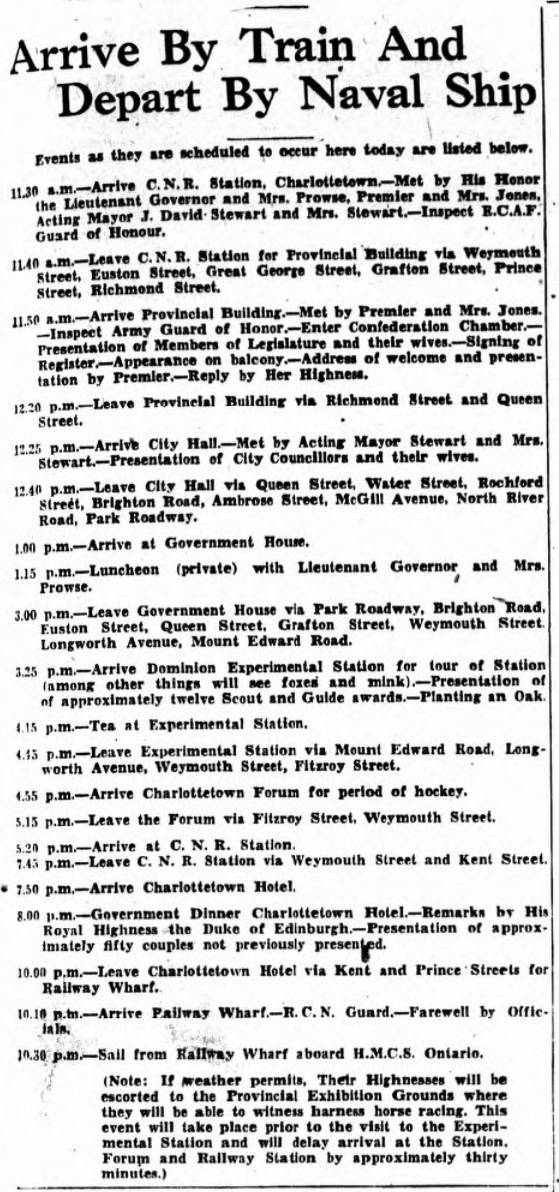
For those of you watching the excellent Netflix series The Crown, this visit came only four months before the death of Elizabeth’s father King George VI and her becoming to Queen; this trip was part of a longer world tour that she took on behalf of her father. Her visit to Prince Edward Island was preceded by a visit to the United States and a meeting with President Truman.
The plot that runs through the first season of the U.S. version of The Office is that the Scranton Branch of Dunder Mifflin is under threat of closure; much of what ensued over that short 6-episode season extends from this conceit:
News spreads throughout the office that Dunder Mifflin’s corporate headquarters is planning to downsize an entire branch, leading to general anxiety, but Michael chooses to deny or downplay the realities of the situation in order to maintain employee morale.
It’s hard not to think of this as we watch our Members of the Legislative Assembly this week debating how to best interpret the results of a non-binding plebiscite on electoral reform that concluded last week with Mixed Member Proportional Representation emerging the victor at the end of the ranked balloting calculations.
MLAs are, in my experience, honourable people who don’t receive enough credit for the demands the job places on them. The job, however, at least in its current incarnation, requires one to have an extraordinary belief in the truth of ones own convictions and the veracity of ones ideas. It is not a job given to attracting collaborators simply because the way we’ve opted to run our legislature is more cage-match-with-decorum than develop-consensus-together-for-a-better-future.
Which is to say that honourable as though they might be, they are not disinterested parties in determining how they and their successors should be selected: if you’ve jumped through the wrenching logistical hoops to get elected to the Assembly under System A, it is inevitable that when System B comes along as the popular favourite, a system that threatens to turn things upside down, redraw the districts, throw all the models and traditions out of whack, and create a new, largely unknown playing field, you would react negatively, or at least with deep suspicion. And that negativity needn’t be seen as selfish, at least not entirely: if you are part of a government doing what you perceive to be good works following a markedly different philosophy than others might, why would you volunteer to close the Scranton Branch and let the nogoodniks from Nashua and Buffalo take over? It would be irrational.
If I’ve learned anything in these mid-stages of my life, it’s that being right about something has little to do with anything, and simply trying harder to be even righter seldom produces a better result, and often has unintended consequences.
In this light it’s important that we all seek to understand more about the motivations that lie beneath the actions of MLAs who, some would say, are clinging irrationally to a first-past-the-post lifeboat, and, others would say, are defending a system that’s always worked and always will.
The people I trust the voices of most on electoral reform on Prince Edward Island are those Islanders who’ve served inside the belly of the beast and have had time to reflect on their experiences.
Alan Buchanan was an MLA from 1989 to 1996, in the Joe Ghiz and Catherine Callbeck governments, serving in cabinet as Minister of Health and Social Services and Minister of Provincial Affairs and Attorney General. Alan is a thoughtful soul, and one of the Island’s smartest minds. In his essay A Case for Accepting the Results he reflects on both the election of Donald Trump and the interpretation of the plebiscite results here on the Island; he writes, in part:
Just as in the United States, people here have grown tired and impatient with a system of government that appears to simply and routinely pass power back and forth between the two mainstream parties. They are tired of a system that appears to create a king-like premier who can reward his friends at court with contracts and largess. I am not for a moment suggesting this is a new phenomenon. Patronage has always been a part of the boss-follower model of politics we have practiced here on PEI. I was a part of it myself.
Cynthia King served as an MLA from 2007 to 2011 in the Robert Ghiz government. Cynthia has been a friend for a long time – she taught [[Oliver]] how to ride a bike – and she too has had cause to reflect on her time in the legislature. In Putting legislators back in legislature an opinion piece in The Guardian that ran last week, she reveals some of what she learned:
Let me be clear … these are not criticisms of the government of which I was a member. I believe that they are endemic to our electoral system and how it interacts with our provincial legislature.
I learned some hard lessons very quickly about being an MLA
I learned that MLA’s are expected to tow the party line, regardless of what an issue means to the constituents I was elected to serve.
I learned that being a career councillor was more important than being a legislator.
I learned that a perceived impression of doing people favours was the preferred modus operandi.
I learned that cynicism is as pronounced with government as it is with the electorate.
I learned that advancement in the system in the form of chairing a committee or getting into cabinet, for example, was based on a number of factors with partisan loyalty being chief among them.
Liberal or Conservative … it is all the same and will remain so as long as we continue to elect governments using FPTP.
This week, in the Other Side of Crazy, on her own website, a rumination on the results of the plebiscite, she elaborates:
And in order to level this imbalance of power there needs to be an illusion of opposition, because in reality, there isn’t much of one. Traditionally, anyone who ends up across from government, as the official Opposition, spews as much, if not more, rhetoric as government. Question Period is embarrassing at best and a complete waste of time, save for the sound bites for the media. There is no attempt at cooperation or collaboration as far as the public can see. Oppositions are generally ineffective at holding governments to account. They are on the other side which means they must oppose everything, even if it’s a good idea.
Allan Rankin had a very brief spate of party-political activity, running unsuccessfully against sitting Premier Alex Campbell in the election of 1974 for the NDP; chastened, he found his strong suit in other areas of the democratic process, serving, over a distinguished career, as a public servant, Deputy Minister, Clerk of the Legislative Assembly and Clerk of Executive Council (he’s also a talented musician; I designed his first website, years ago, and we’ve been friends since). There is no Islander alive today who’s seen more of government from more perspectives. He called the plebiscite back in March in his column in The Eastern Graphic, The Forces Against Electoral Reform:
Given Premier MacLauchlan’s outspoken opposition to changing the present voting system, and the reluctance of the two major political parties to weaken their own stranglehold on power, it is difficult to imagine any plebiscite vote producing a call for reform, or the present government signing off on it.
I attended the Special Committee’s meeting last week in Hunter River, and the forces both in favor and against democratic reform were strongly represented.
The reformers of course were there, schooled in electoral science, and they spoke about the Finland and New Zealand experiences, although that discussion seemed to go over the heads of many.
Also present at the United Church gathering were a few local residents whose kinship with the two major political parties in the province was obvious.
I noticed at least two former District Poll Chairmen.
Their skepticism and fear of electoral reform is understandable, because broadening the tent politically threatens the two old line parties, who have taken turns governing the Island for the past 150 years.
Strong majority governments dispensing favoritism and patronage is their preferred political landscape.
Alan and Cynthia and Allan have been locked inside the panopticon of our democracy; each has a deep understanding of how things work on the inside of our first-past-the-post two-party system. And while each has had reasons, since leaving public service, to grind axes, their axe-grinding days are long since over, and their contemplations are among the best, least-biased user’s guides to democratic reform we have.
We would do well to heed their wise words.
[[Catherine]] is spending the week in an apartment in the hills of San Sebastián, Spain with our friend Cindy Hanson.
They have one set of keys to the apartment.
This afternoon Catherine found herself, without keys, at the door to the apartment and without a way of contacting Cindy, who was, with keys, inside the apartment.
Catherine has a mobile phone with a global SIM in it, and can call me here in Canada for 25 cents a minute.
So she called me. I was having lunch with my friend Kevin at The Noodle House here in Charlottetown.
I Skyped Cindy: “Can you let Catherine in. She is downstairs.”
Cindy, fortunately, was online at the time.
Cindy let Catherine in the door.
Such is life in the digital world.
Here’s a map, using data extracted from the federal Connecting Canadians lookup tool, showing the areas of Prince Edward Island that are served either by Bell Aliant fibre or Eastlink cable Internet.
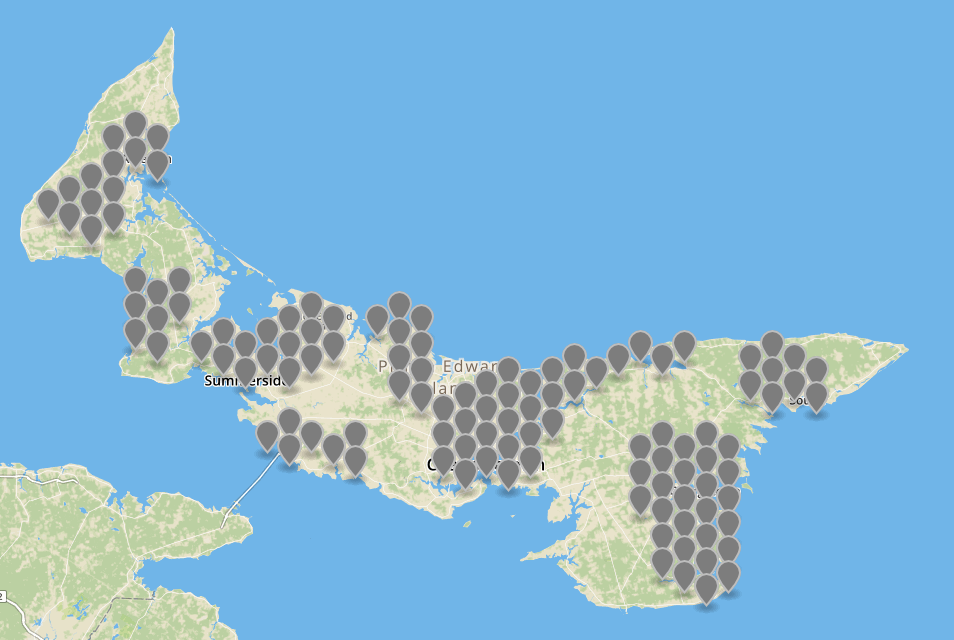
The federal tool divides the Island into 308 hexagon-shaped segments, and then overlays ISP-provided coverage area maps to show what services are offered in what segments; as such it’s a blunt instrument, but not an useless one.
If you’d like to do some additional data analysis using the information I extracted from the tool, you can use these two CSV files:
- hexagons.csv contains 308 rows, one for each hexagon, with its latitude, longitude, community name, population, dwelling count and ID.
- providers.csv contains all the information for each provider offering service in each hexagon; it’s related to the hexagons data file by hexagon ID.
So, for example, here’s a row in hexagons.csv:
PE46470633,"North Rustico",46.473231,-63.312532,501+,251-500
that defines a hexagon-shaped region around North Rustico centred on 46.473231,-63.312532, with an ID of PE46470633.
In the providers.csv file there are seven rows with this ID, showing the 7 Internet access options offered inside that hexagon:
PE46470633,Bell,5,8,"Mobile Wireless"
PE46470633,"Bell Aliant",5,1,DSL
PE46470633,Eastlink,5,2,Cable
PE46470633,Eastlink,5,8,"Mobile Wireless"
PE46470633,"Rogers Communications",5,8,"Mobile Wireless"
PE46470633,"Route 2",5,5,"Fixed Wireless"
PE46470633,"Xplornet Communications Inc",5,7,"Direct-to-Home Satellite"
If you import these data files into an SQL database, you can then do queries like:
select distinct hexagons.hexid,hexLat,hexLon
from hexagons,providers
where (hexagons.hexid = providers.hexid)
and providers.ispType in ('Fixed Wireless')
and name='Xplornet Communications Inc';
which extracts those areas where Xplornet Communications offers its fixed wireless service. You can then use that data with a web mapping tool like GeoJSON.io, to map those areas:
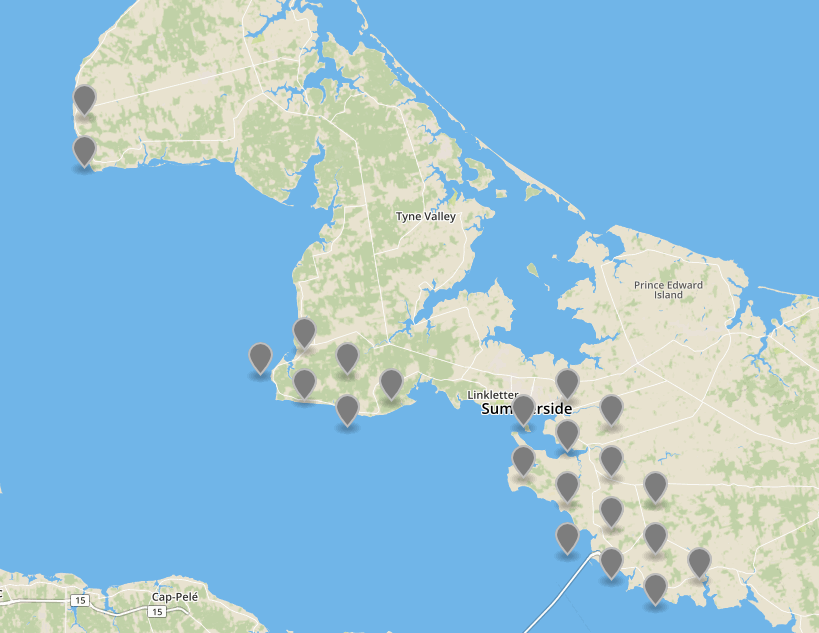
As I found out first-hand when preparing for the Rural Internet Access Town Hall in September, finding your way through the complex thicket of Internet access options (or lack of options) is confusing. While this tool, and the data underlying it, don’t explain the difference among providers (unlimited vs. usage-based billing, for example, can make providers that appear apples-to-apple decidedly not so), at least it provides a geographically based “Yellow Pages”-style starting point.
Update: As of summer 2017, many of the materials formerly in the Provincial Autism Lending Library have been integrated into the Provincial Library System. These are in the process of being added to the catalogue, and are or will shortly be available for searching here.
Last month I had occasion to learn that the Department of Education, Early Learning and Culture maintains an autism resource library in the Arsenault Building here in Charlottetown.
I’ve been the father of a child with autism for 16 years, so you’d have thought I would have known about this before now, but it’s a cleverly hidden resource, the only reference to it on the province’s website coming in a brief mention on page 6 of the Autism Funding Guidelines:
If additional materials are required, the parent is encouraged to borrow materials from the Autism Lending Library. The library can be accessed by calling 368-6513 or the Autism Consultant at the school board. Non-consumable materials must be returned to the library once the child has finished with them to be available for other children
Once I found out about the library, I called to find out how I could search its catalogue, and was told there there is no public catalogue, but that I was free to identify resources and a local database search could be done to see if they could be located.
As someone with a strong belief in the power of public library catalogues as one of the integral public faces of a collection, this dismayed me, and so I began the process of trying to advocate for the creation of such a catalogue.
This morning, on the way to school, [[Oliver]] and I had a few minutes to spare, so we decided to drop into the Arsenault Building to visit the catalogue for ourselves, and to return a book that Oliver’s autism consultant borrowed on our behalf. The person responsible for the library kindly loaned us a set of keys and helpfully set us off on our way to the basement to find it.
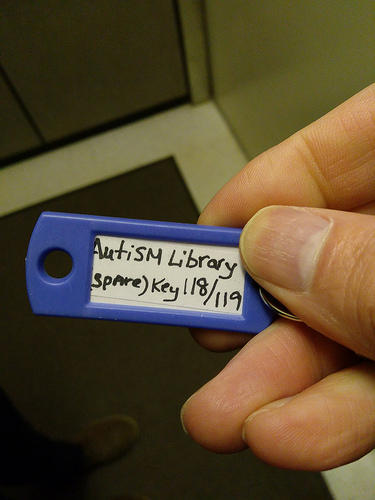
The library shares a corner of the Arsenault Building basement with the Early Childhood Education Library and it was that library we let ourselves into first, by mistake. In that room we found a computer with a sticky note on it titled “Koha Library Log In”:

Koha is the open source library catalogue system that Prince Edward Island school library use, so I had cause to hope that perhaps there already was a public catalog for the autism collection, but that it simply wasn’t widely known about. When I got back to my office I visited the main PEI School Library Catalogue site, and, sure enough, below Athena Consolidated and above Belfast Consolidated was a selection for Autism Library:

Which led me to the PEI Autism Lending Library’s public catalogue. Woohoo!
The collection is small, but broad, and there were many resources I saw in our brief breeze through that I’ll return later to borrow. There are books about anxiety, sexuality, school and work, to name but four.
Support services and resources for people with autism and their families are in woefully short supply in Prince Edward Island; the very least we can do is to shout from the rooftops about the resources that we do have, and this library, and its catalogue, is something that everyone should know about. Spread the word!
(By the way, there’s a public catalogue for the Early Childhood Education Library too).
How To Access the Collection
So, if you would like to access the resources in this collection:
- Search the catalogue.
- Go to the Arsenault Building during Government Office Hours and visit Room 319 on the third floor to gain access to the library.
Be warned that although Koha has provision for it, the circulation module appears not to be in use, so whether or not any given resource has been checked out or not may not be accurately reflected in the catalogue.
But wait, there’s more!
In addition to the province’s collection of resources, Stars for Life Foundation also has a small lending library of materials available to people with autism and their support network in its house on Maypoint Road.
To access the Stars for Life collection, visit the house during office hours (you can call ahead to confirm); the resource library is in the basement day program area; enter from the parking lot and go to the end of the hall and downstairs and talk to the receptionist, who will point the way.

Stars for Life’s collection has no public catalogue, but as I recently joined the board of the foundation, I’m in a position to help do something about that.
My hope is that, in short order, we can have a union catalogue of autism resources available from many different sources of PEI; stay tuned.
My friend Carol turned me on to the fact that Pet Valu, in the Smitty’s Plaza in Charlottetown, has a do-it-yourself dog washing station.
For $10, you get access to a tub (at chest height), shampoo, towels, a dryer, grooming tools and treats.
There’s no time limit. What a great alternative to washing Ethan at home in the bathtub!
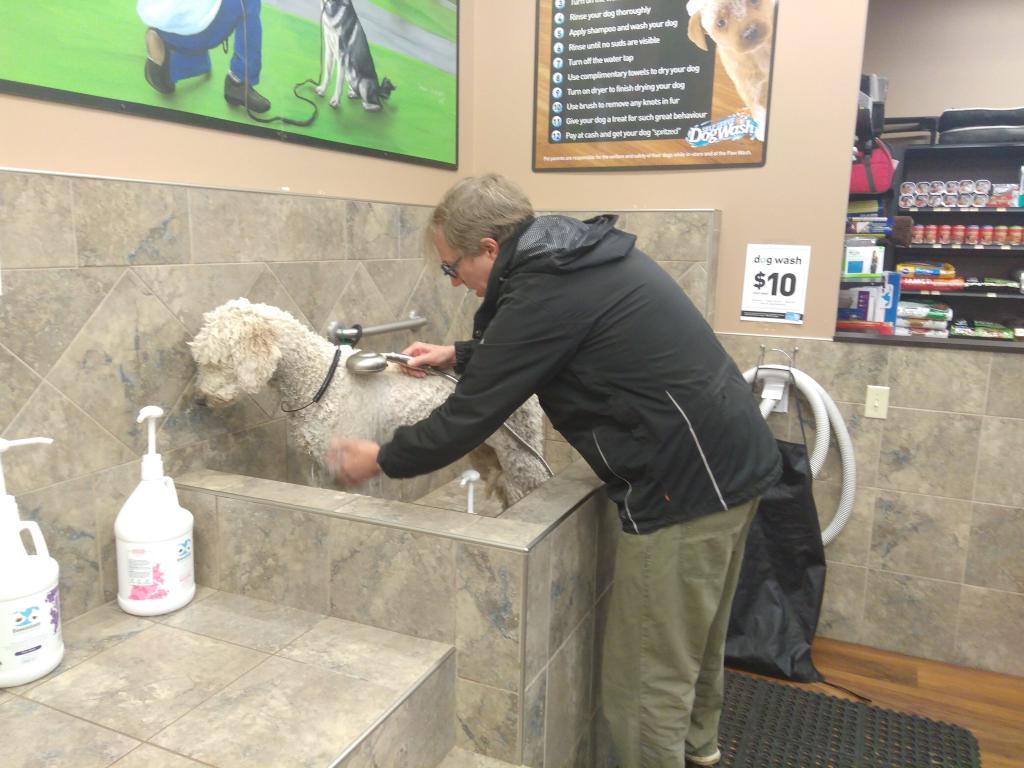
I have no idea whether Domino’s has the best pizza in town — I’m pretty sure it doesn’t — but there’s no doubting it has the best mobile app. And that wins me over 9 times out of 10.

 I am
I am